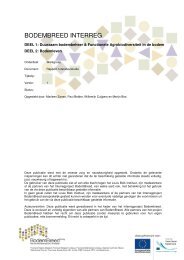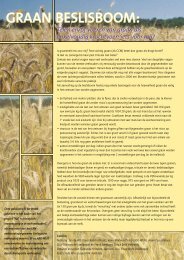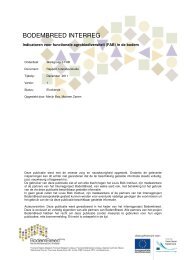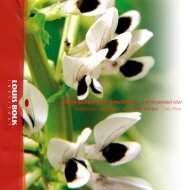Respiratory System Disorders and Therapy From a New - Louis Bolk ...
Respiratory System Disorders and Therapy From a New - Louis Bolk ...
Respiratory System Disorders and Therapy From a New - Louis Bolk ...
Create successful ePaper yourself
Turn your PDF publications into a flip-book with our unique Google optimized e-Paper software.
Jetlag<br />
Who does not know the phenomenon of jetlag? During every trip in which we<br />
move around the planet going east or west, we ‘travel in time’. Moving in an<br />
easterly or westerly direction results in our arriving at a place with a different<br />
day-<strong>and</strong>-night rhythm than we are used to. Our body reacts noticeably to this,<br />
particularly if the time difference is greater than two to four hours.<br />
Curiously, not all functions ‘travel with us’ synchronically. When we examine<br />
the circadian rhythm of excretion of various substances by the kidneys, we find<br />
major differences in adaptation time to the new day-<strong>and</strong>-night rhythm.<br />
Many substances are excreted in a circadian rhythm; they are not excreted at<br />
the same rate during the course of the day. For example, the excretion rhythms<br />
of phosphorus, sodium, <strong>and</strong> potassium in the urine differ greatly. These rhythms<br />
do not adapt to the new time zone simultaneously. Phosphorus has an excretion<br />
rhythm that is adjusted to the new situation within a day, the excretion rhythm<br />
of sodium is not adjusted for a week, <strong>and</strong> it takes three or four weeks before<br />
the excretion rhythm of potassium harmonizes with the circadian rhythm of<br />
the new location. It is perhaps most striking of all that the adaptation time for<br />
the excretory rhythm is not so much connected to the organ of excretion — the<br />
kidneys, in this case — but is specifically determined by the substances involved.<br />
This is a riddle of physiology for which there is, as yet, no explanation. It does<br />
show, however, the degree to which our organism functions rhythmically <strong>and</strong><br />
how it adjusts its rhythms in health. (See also section 7.3.)<br />
A balance that oscillates around a midpoint creates, on the one h<strong>and</strong>, the ability to adapt<br />
to ever-changing circumstances. This supports the ability for self-preservation. However,<br />
the fluctuating balance also makes the organism vulnerable to dysbalance in the form of<br />
disease. We have established that, in illness, the balance is disturbed to one side or the<br />
other (section 2.4.2.). The equilibrium no longer oscillates, it is temporarily stuck on one<br />
side. A balance that oscillates includes the possibility of illness <strong>and</strong> in a period of disease<br />
the body remains off balance.

















